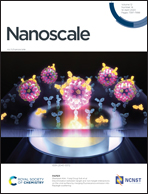Transformation of carbon dioxide into carbon nanotubes for enhanced ion transport and energy storage†
Abstract
The synthesis of carbon nanotubes (CNTs) from CO2 is an attractive strategy to reduce CO2 emission, but involves extreme reaction conditions and has low scalability. This work introduces continuous chemical vapor deposition for the conversion of CO2 to CNTs using the NaBH4 reductant and NiCl2 catalyst. Multi-walled CNT fibers were synthesized from gaseous CO2 under mild conditions (500–700 °C and 1 atm). Based on in situ analyses, the proposed mechanism behind the formation of CO2-derived CNTs (CCNTs) is CO2 activation and subsequent hydroboration for the generation of methane, which can induce the growth of CCNTs on the catalyst. Their intrinsic properties give rise to an enhanced capacitive performance. The boron and oxygen of CCNTs provide a pseudo-capacitance of 302 F g−1 at a low charging rate of 0.1 A g−1 in 1 M TEABF4/acetonitrile. The mesoporous networks between CCNT fibers enhance ion transport at a high current density of 205 A g−1, leading to an outstanding energy density of 13 W h kg−1 at a high power density of 115 kW kg−1. A well-developed graphitized structure of CCNTs contributes to the reduction of the electrochemical resistance and leads to their superior stability at 65 °C during 10 000 cycles.



 Please wait while we load your content...
Please wait while we load your content...